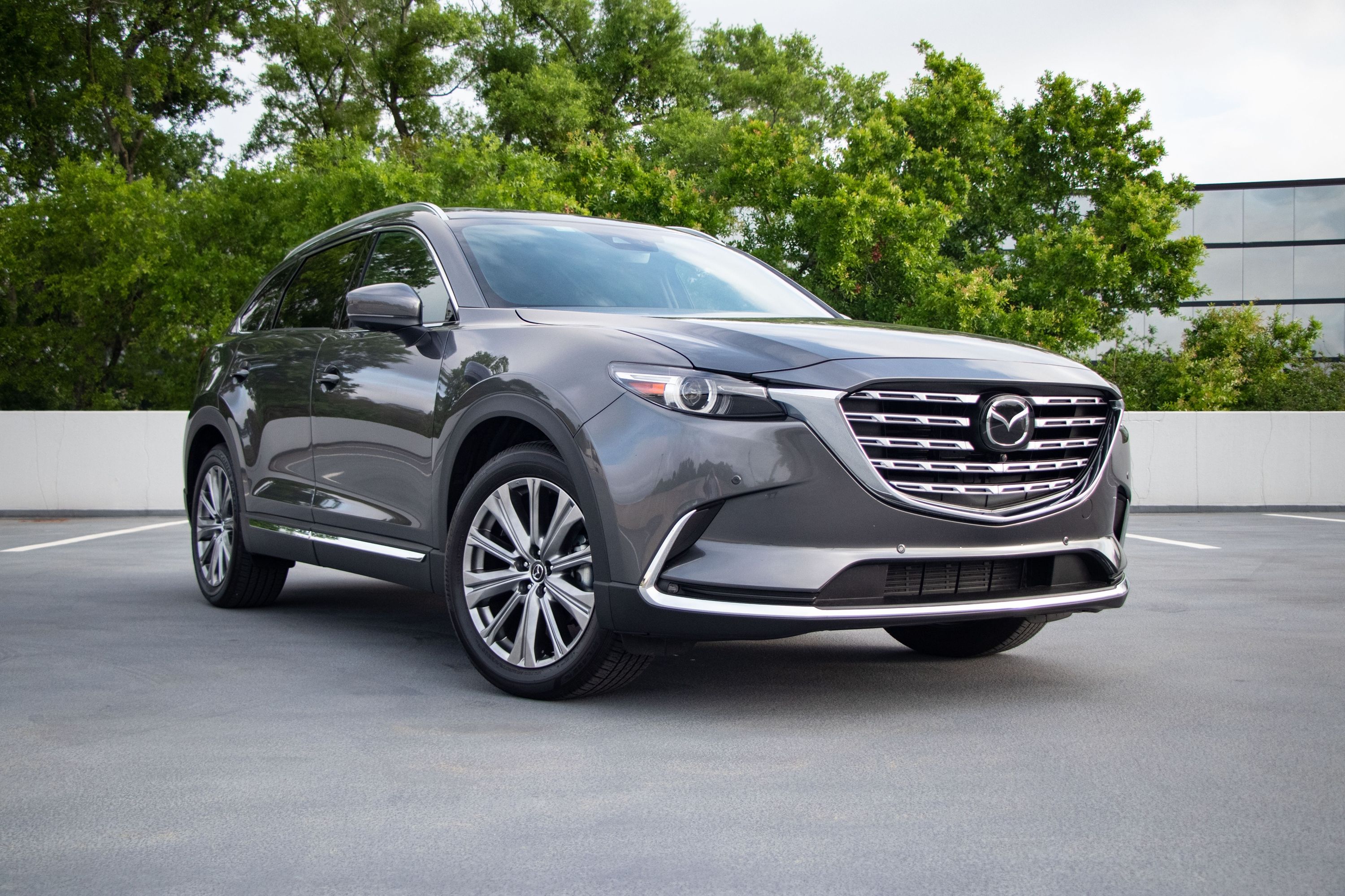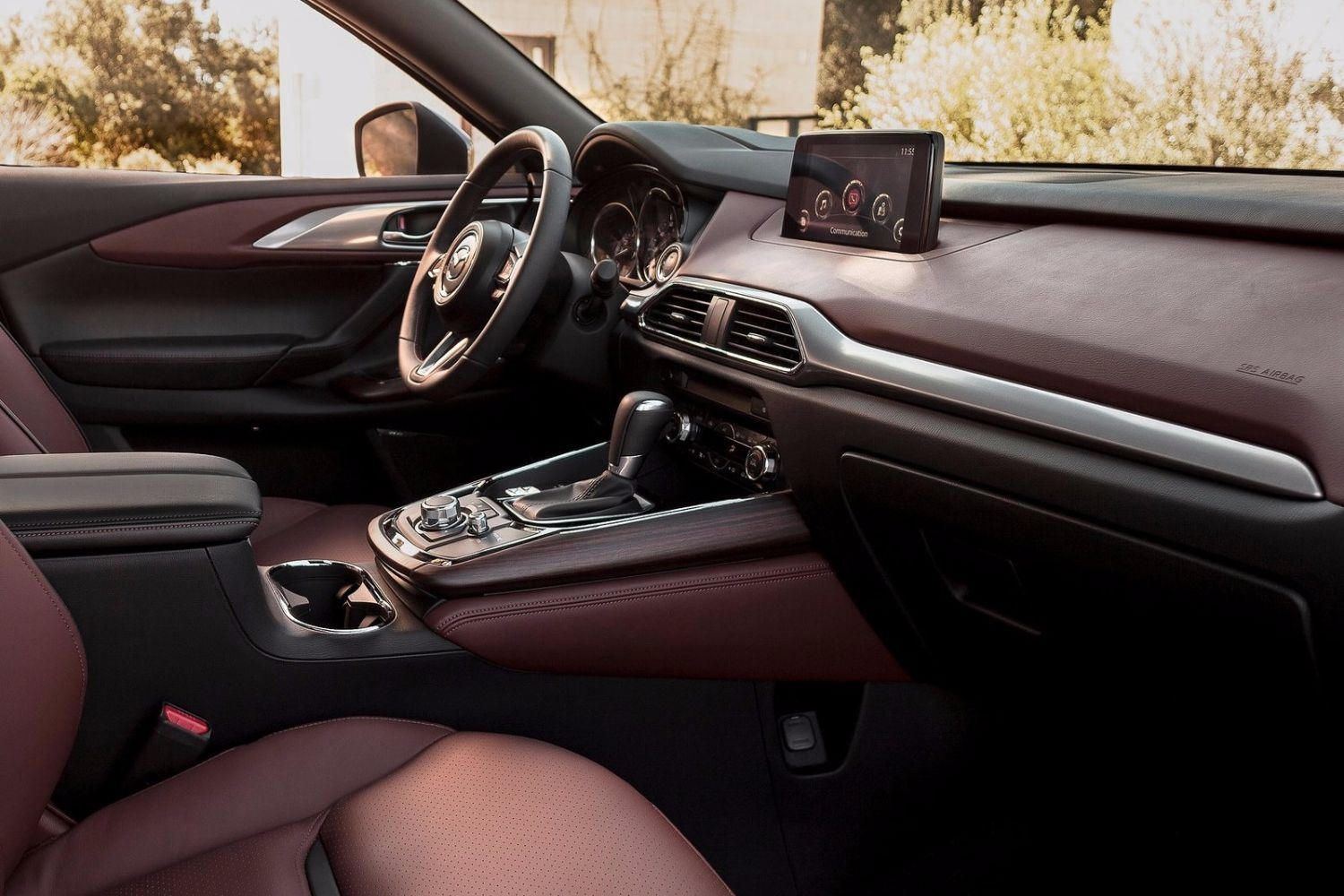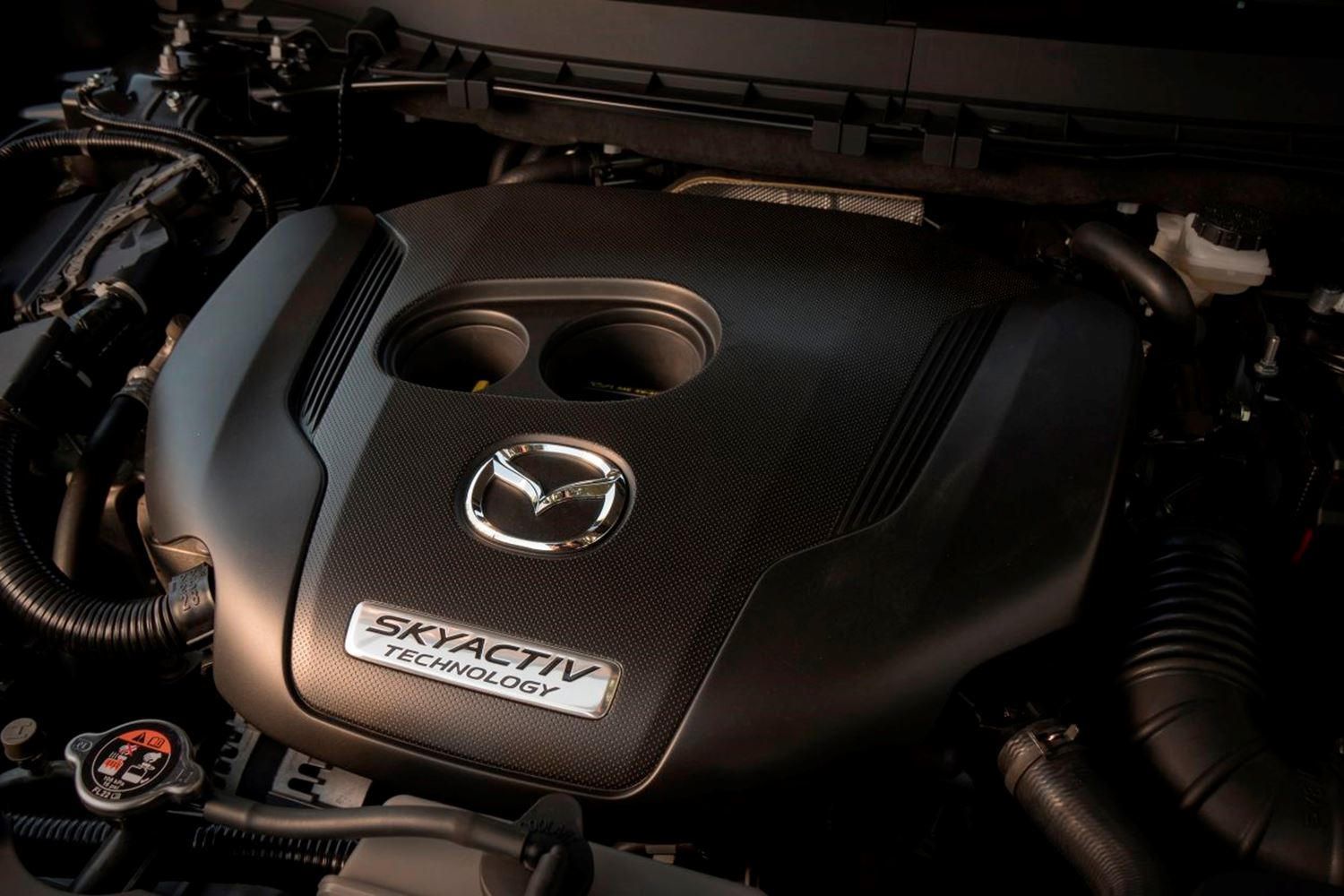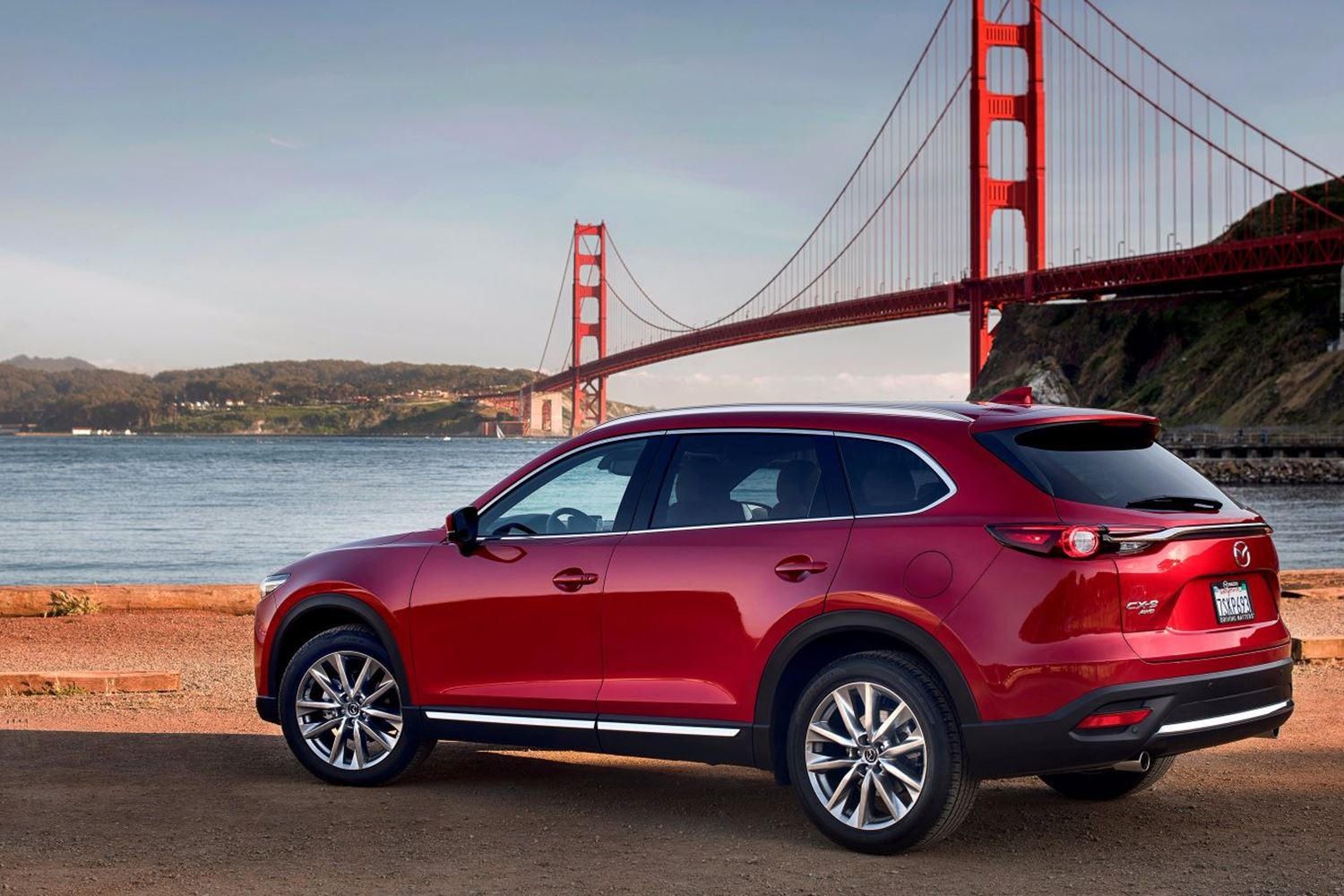Everything you need to know
Terrific handling, on-par pricing and some stellar engines can't quite make up for the Mazda CX-9's disappointing practicality.
Over the last few years, Mazda's managed to position itself as a maker of affordable yet fun-to-drive cars, regardless of what class of vehicle it's producing. From lithe little sports cars like the MX-5 Miata to big sedans and crossovers, it appears no car maker has as deft an ability to make any car maker as entertaining to drive as Mazda. Perhaps nowhere is this more evident than in the Mazda CX-9. After all, this is a seven-seater SUV that handles in a way that no car of this size has any right to. However, as spot on the driving dynamics may be, the Mazda CX-9 doesn't quite pull off everything else as excellently.
Nicely built, but lacking in space when compared to rivals
Despite the seven-seater configuration, the CX-9 isn't really spacious enough for buyers.
One such area regards the rather limited outright practicality on offer in the Mazda CX-9. Despite the seven-seater configuration, the CX-9 isn't really spacious enough for buyers who'll be regularly ferrying six passengers about – and even the middle row of seats is a bit pinched for room when compared with what rivals can offer. For instance, the two uttermost rear seats are rather restrictive in terms of head and leg room, so are only really suitable for children. Plus, whilst the middle seats aren't anywhere near as hemmed in, taller adults will find the seats to be a little bit restrictive. Put simply, if you want the best passenger volume in a seven-seater SUV, a Toyota Highlander and the Nissan Pathfinder will be more suited to your needs. Things do equalize out a bit when it comes to trunk space, with the 14.4 cubic feet of space with all seats in place being on par with many of the Mazda CX-9's chief competitors. Things do deteriorate a bit when you fold the third and second rows away, with respective capacities of 38.2 and 71.2 being only decent by class standards – if still big enough for most buyers' needs. It also helps that the rear seats do at least fold completely flat, with the sizeable tailgate opening and absence of any trunk lip making it easy in theory to load heavier and more cumbersome items into the back.
Arguably the highlight, though, is the infotainment display.
One area that Mazda absolutely nailed with the CX-9's interior, though, was the build quality. Though it obviously won't have the premium alternatives quaking in their boots, the overall fit-and-finish of the Mazda CX-9's cabin is enough to rival the likes of the Kia Sorento, and the abundance of soft-touch plastics on even the entry level cars is very impressive. We're also big fans of how ergonomically sound the Mazda CX-9 is, with the analogue gauges (a noteworthy feature, considering many cars are now replacing them with TFT screens) being especially clear to use. Arguably the highlight, though, is the infotainment display: though it does lack a few features (Apple CarPlay and Android Auto compatibility is non-existent, for instance), the interface makes up for it being extremely easy to use and navigate, with a lot of that being down to the BMW iDrive-esque rotary controller. A lot of car companies can learn a few things from Mazda's approach to infotainment usability.
No mid-sized SUV comes close to the way the Mazda CX-9 drives
The CX-9 is comfortably the ideal vehicle in the mid-sized.
As we said earlier, Mazda's had a habit lately of making cars with best-in-class handling dynamics – so it's no surprise to learn that the CX-9 is comfortably the ideal vehicle in the mid-sized, three-row SUV segment for buyers who consider themselves driving enthusiasts. Whilst that admittedly might be a rather limited customer type to target a car at, it does result in the Mazda CX-9 being rather nice to drive. The steering is responsive and precise, and the combination of decent all-round grip and well controlled body lean during the bends means you can commit the car to a corner without the Mazda CX-9 feeling out of its comfort zone. Which isn't something you can say about a fair few seven-seater SUVs on the market right now.
Also helping the Mazda CX-9 out is the decent all-round visibility.
That focus on outright dynamic finesse hasn't come at the detriment to more important day-to-day aspects that matter to most SUV buyers. For instance, we've little to find fuss with over the ride quality, with only sharper jolts having any noticeable effect on the CX-9 as it's driven down the road, and we're really impressed with the overall noise insulation. Had there been more overall space, the Mazda CX-9 could have been a great car for buyers with sizeable families to use as a long-distance car. Also helping the Mazda CX-9 out is the decent all-round visibility, with only the chunky rear pillars and the slightly narrow rear window hampering what is otherwise a car that doesn't restrict the view out by modern car standards. Plus, the rearward visibility qualms are somewhat eased by the fact all Mazda CX-9s come with a reversing camera as standard.
A truly great mid-sized SUV engine
The 2.5-liter turbo-four is actually a really well-suited engine for the Mazda CX-9's requirements.
Such is the times we live in, that Mazda couldn't quite justify replacing the V6 gasoline engine from the old CX-9 with a brand new one. So, with four-cylinders being Mazda's forte at the moment, the end result is a smaller, 2.5-liter four-pot gasoline engine with less power than the V6 being the only engine option in the Mazda CX-9 range. Despite being down on power (250 hp, versus the old V6's 273 hp), the 2.5-liter turbo-four is actually a really well-suited engine for the Mazda CX-9's requirements. As the new CX-9's noticeably lighter than its predecessor, the lack of power isn't initially apparent unless you're the sort of buyer who uses as many revs as possible, and the meaty 310 lb-ft of torque that's available in the lower half of the rev band means there's a decent amount of half-throttle pulling power on offer in the Mazda CX-9.
The official stats claim the front-wheel-drive Mazda CX-9 can return 22mpg in the city and 28mpg on the highway.
Downsizing has also resulted in some rather impressive fuel economy figures: the official stats claim the front-wheel-drive Mazda CX-9 can return 22mpg in the city and 28mpg on the highway, with all-wheel-drive models sacrificing just one mpg in both categories for their superior on-paper abilities in more adverse weather conditions. Though some rivals do claim to be almost as efficient as the Mazda (the front-wheel-drive four-cylinder gasoline Hyundai Santa Fe, for example, has identical on-paper stats as the all-wheel-drive Mazda CX-9), the CX-9 does rank up there as one of the more efficient cars in this class. The only slight downside we have with the Mazda CX-9's powertrain is the sole transmission it's available with: a six-speed automatic. Whilst it's by no means a dreadful transmission, we would have preferred the CX-9's auto to be a bit smoother and responsive when changing gear – though the latter category can at least be improved by engaging the 'Mazda Sport Mode' feature, which speeds up the gear changes and makes the transmission less susceptible to holding onto one gear for a longer period of time.
Well-priced, if not exactly a mid-sized SUV bargain
Items like three-zone climate control, a seven-inch infotainment interface, 18inch alloys and the reversing camera are all available on the base 'Sport' specification car.
On paper, the Mazda CX-9's starting price doesn't seem all that bad. After all, $31,520 for a well-made, seven-seater SUV does in isolation seem rather reasonable. The issues begin, however, when you factor in the similar pricing of other chief rivals – the more spacious Dodge Durango and Honda Pilot, for instance, are available as nigh-on identical starting prices, with the latter maintaining its like-for-like pricing parity with the rest of the Mazda CX-9's trim packages. As a result, those looking for a bargain won't necessarily find it in the Mazda CX-9. Still, at least buyers won't exactly feel short-changed: items like three-zone climate control, a seven-inch infotainment interface, 18inch alloys and the reversing camera we mentioned earlier are all available on the base 'Sport' specification car. If we were buying a new Mazda CX-9, though, we'd be more inclined to look at the 'Touring' trim. Though it is noticeably more expensive, with a starting price of $35,970, you do at least get extras like full leather upholstery, heated front seats with power adjustment on the driver's side, keyless entry, a larger eight-inch display and a blind spot monitoring system that further helps alleviate the concerns brought about by the limited rear visibility.
All Mazda CX-9 models get as standard equipment front, side and curtain airbags, hill start assist, trailer stability assist and various braking assists.
For sure, the higher-up trims are undoubtedly far nicer ('Grand Touring' gets items like lane departure warning and radar-guided cruise control, whereas the flagship 'Signature' has all of that on top of its uber-luxurious Nappa leather and rosemary wood interior trim), but we feel the Touring spec is the sweet spot in the Mazda CX-9 range, and those less inclined to have the most upmarket interior or the most advanced gadgets will be fine without the luxuries available in the top two trims. Safety gear, though, is pretty good across the board. All Mazda CX-9 models get as standard equipment front, side and curtain airbags, hill start assist, trailer stability assist and various braking assists that help improve the car's performance during an emergency stop. As the Mazda CX-9 is a new car, it's tricky at the moment to predict just how well this mid-sized SUV will perform reliability-wise. However, judging by the standards set by more recent Mazdas, the CX-9 should be a sturdy vehicle, so you hopefully shouldn't need to make use of the car's three-years/36,000-miles bumper-to-bumper and five-years/60,000-miles powertrain warranties.




